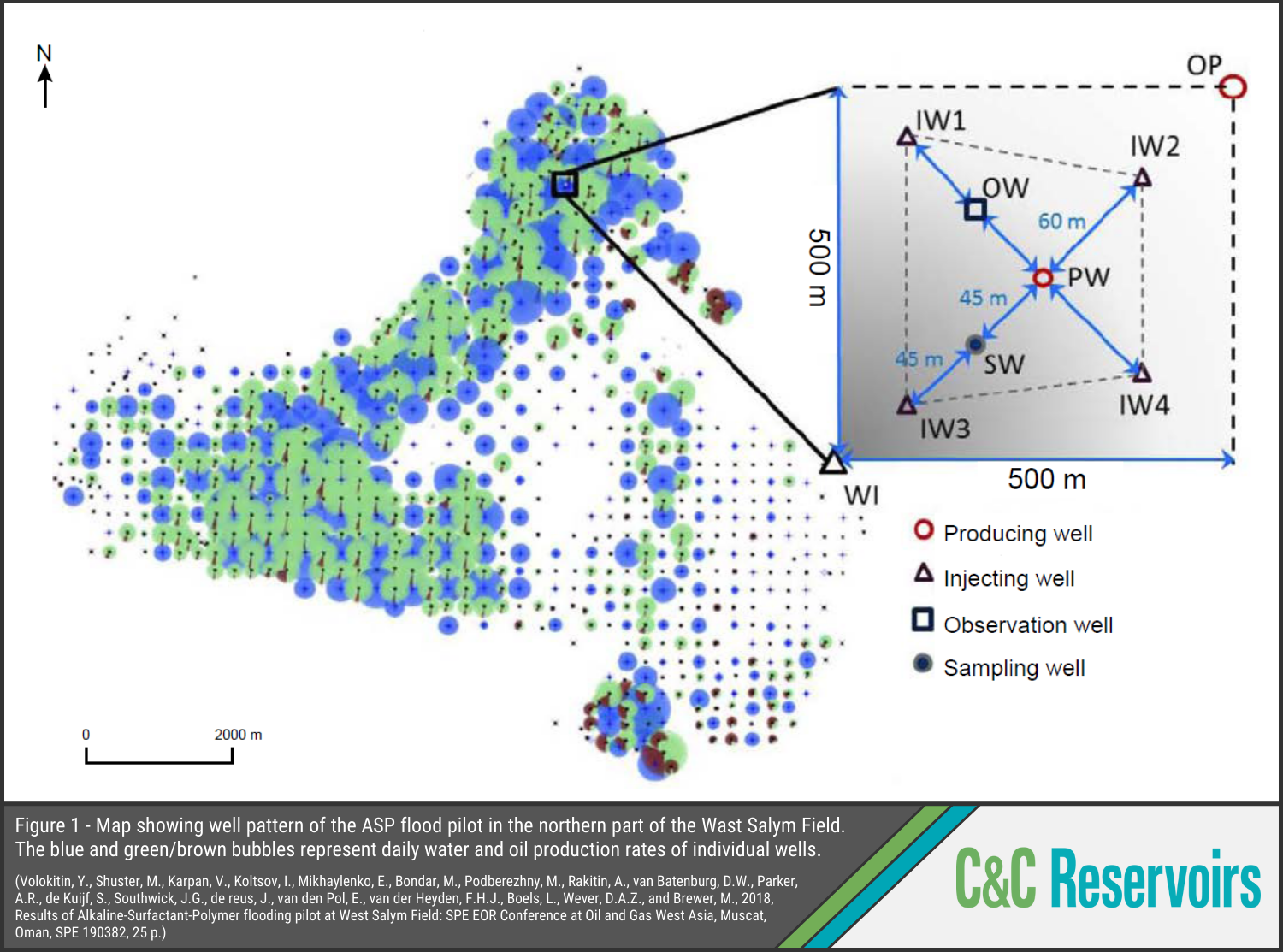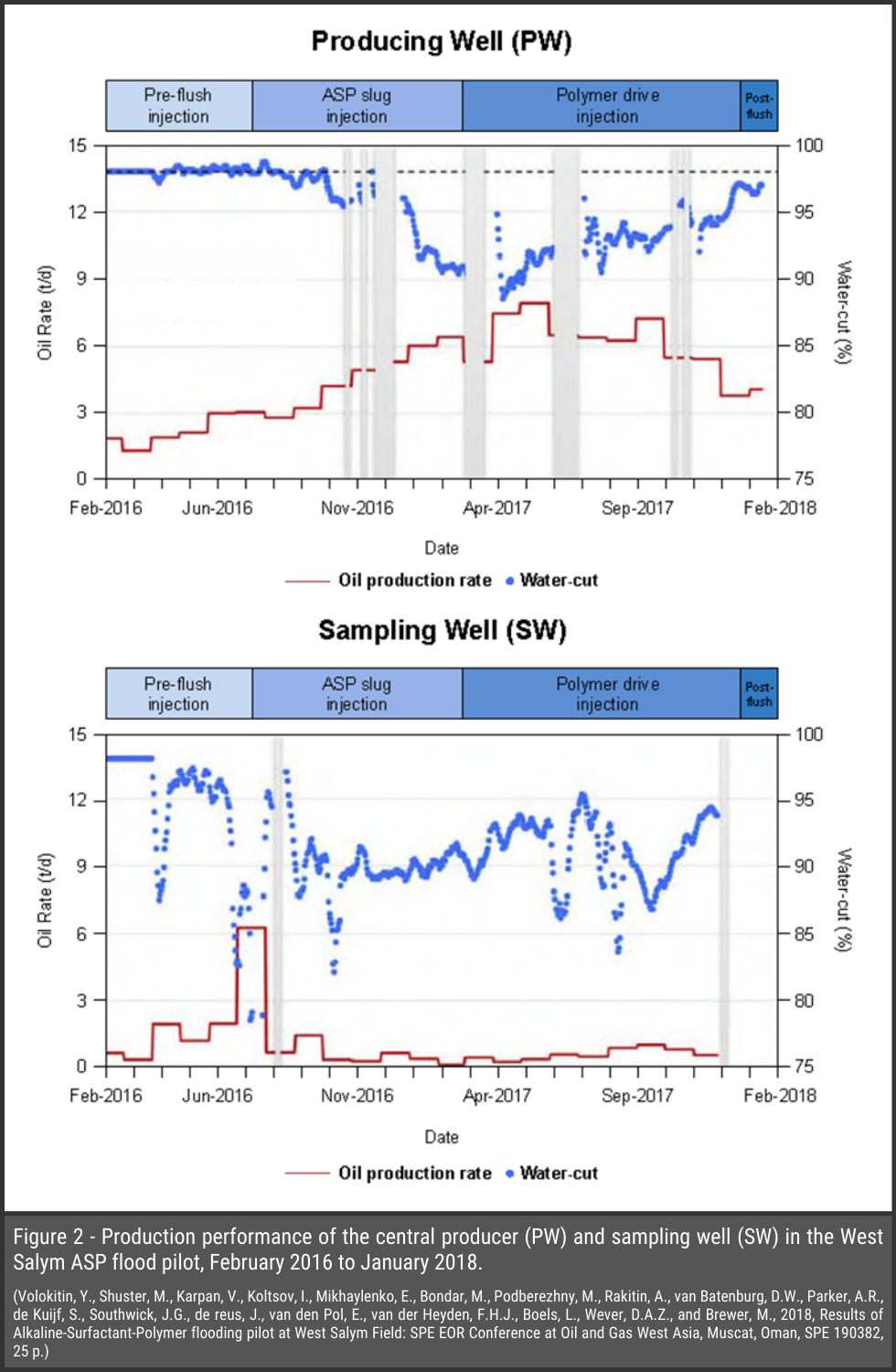The West Salym Field
Analogue Spotlight
The West Salym Field, located in remote western Siberia, produces oil from the Lower Cretaceous AS10-11 sandstones. Water injection began in 2005, but its sweep efficiency was limited in certain reservoir units, prompting infill drilling and the planning of an ASP flooding pilot.
ASP flooding was chosen due to the favourable characteristics of the 31° API, low-viscosity (2 cP) oil and the homogeneous, laterally well-connected reservoir. The pilot targeted the AS11.2 zone as it contained the greatest volume of remaining oil, and having been extensively waterflooded, an area in the north of the field was selected to shorten the pre-flush phase.
The pilot was conducted using a 5-spot pattern, consisting of 4 injectors and 1 producer, and was treated in four stages (Fig. 1):
- 0.3 PV pre-flush water injection (February-June 2016).
- 0.4 PV ASP slug (July 2016-February 2017).
- 0.4 PV polymer slug (February-December 2017).
- 0.3 PV post-flush injection (January-July 2018).
The ASP pilot achieved a promising 17% incremental recovery factor, raising the ultimate recovery in the pilot area to 69% by sweeping the upper reservoir and decreasing the water-cut (Fig. 2). Unfortunately, the alkali reacted with formation water, causing severe carbonate scaling (30 kg/day/well), which delayed the project and damaged seven electric submersible pumps. Rates were stabilised using scale squeezes, acid treatments and larger pumps at shallower depths. It has been recommended that future projects consider surfactant-polymer flooding to mitigate scaling issues.


